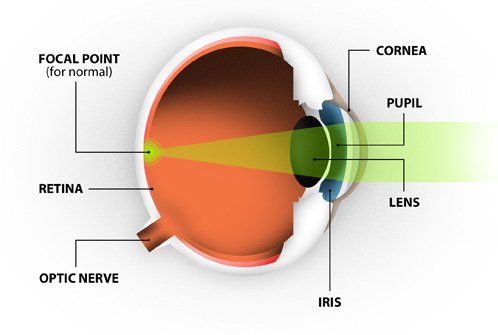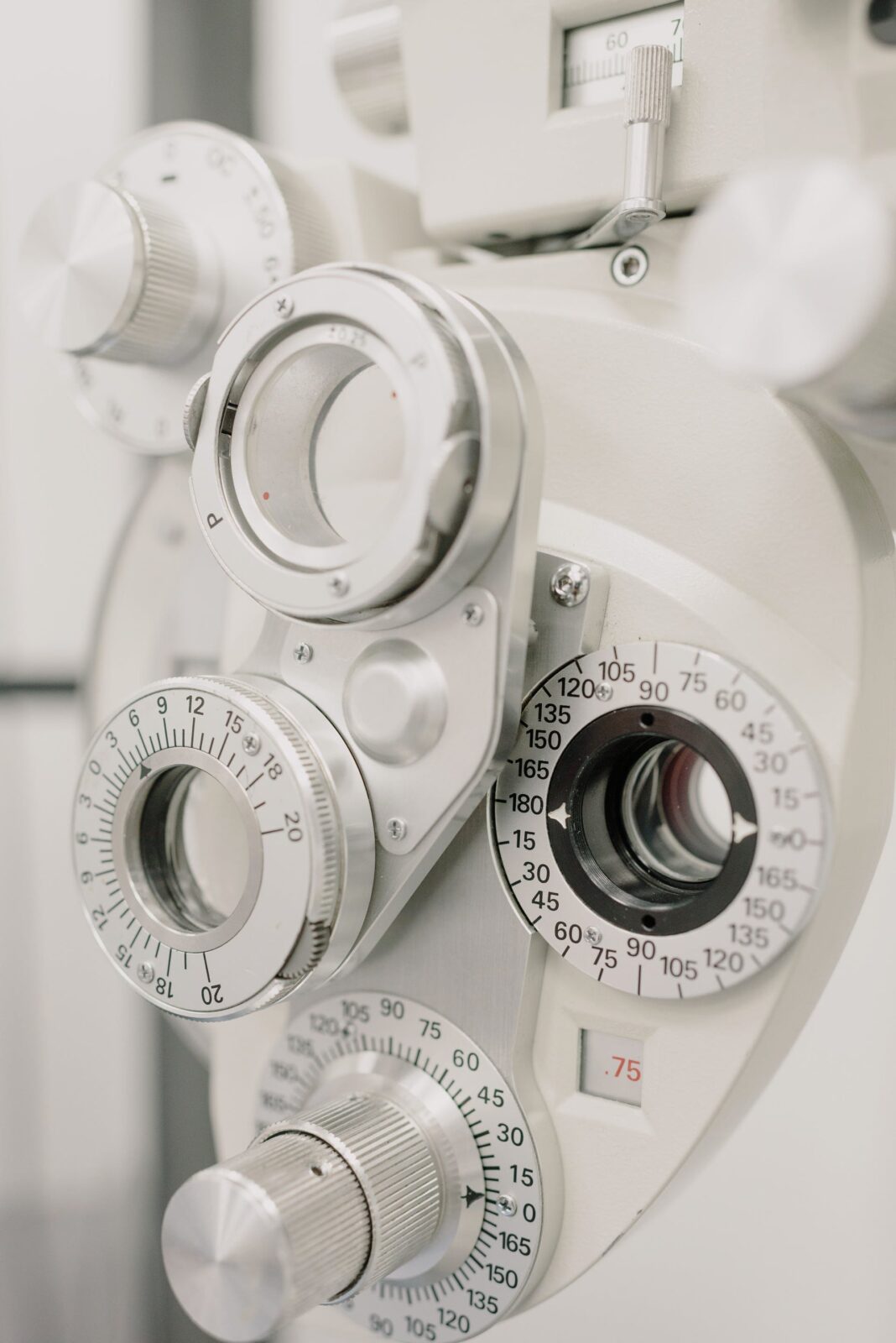Debunking Common Myths About LASIK Eye Surgery
Perhaps you’ve thought about laser eye surgery in the past, but have been put off after sifting through some of the myths and misinformation about the procedure. Or, perhaps you have a friend who told you she heard “this,” or he heard “that” about LASIK eye surgery. With all the myths and misinformation out there, how do you determine the truth? Don’t let yourself be misled by incorrect information. Get the facts about LASIK and let’s debunk these common LASIK myths.
Myth: LASIK is painful
It is completely natural to worry if there will be pain when undergoing any procedure. The good news, however, is that LASIK patients rarely report any pain. Drops are used to numb the eyes. Typically, you will feel some slight pressure at the start of the procedure, which will last a couple of minutes.
Myth: LASIK is such a new surgery that all the potential risks and side effects aren’t known yet
It is a common misconception that LASIK eye surgery is a new procedure. People fear this “new and unknown” operation. In fact, laser eye surgery was invented in the 1980s, with the first US procedure occurring in 1987.[i] This means that LASIK has been performed in the US for over 30 years! Moreover, the technology continues to improve, which means better results for you.
Myth: LASIK only works on nearsighted patients
Two factors have led to the prevalence of this myth. One, nearsightedness is one of the most common eye conditions, so of course, many LASIK patients are nearsighted. Two, when LASIK first came on the scene, it was only used to treat nearsightedness (also called “myopia”). Today, LASIK eye surgery can treat much more than just nearsightedness, including other refractive errors such as farsightedness (hyperopia) and astigmatism.
Myth: You will never need glasses again after having LASIK
This myth is a yes and no. After LASIK, you will most likely be able to ditch your glasses! According to the Mayo Clinic, more than 8 out of 10 people who undergo LASIK eye surgery no longer need glasses or contact lenses for most of their activities.[ii] However, you may still need your glasses for certain activities (like driving at night or reading). Additionally, having undergone LASIK will not change the fact that your eyes will continue to age naturally, which may mean a change in vision down the road.
Myth: You can go blind from LASIK
The fear of going blind is very common, but it is extremely uncommon to experience vision loss due to laser eye surgery. There has never been a reported case of a patient going blind from LASIK.[iii] LASIK is a safe and effective procedure when performed by a skilled and experienced surgeon.
Myth: The treatment time is very long
Myth: LASIK is too expensive for most people to afford
Myth: You’re too old to get LASIK
You may assume you’re too old to bother getting laser eye surgery, or that your eyes are “too far gone.” In fact, there is no age limit for receiving LASIK! Even patients in their 60s experience clearer vision with laser eye surgery. However, it is important to consult with a LASIK specialist to determine if you’re a good candidate for LASIK based on your individual eye health and other factors.
Myth: LASIK can’t treat astigmatism
Are you ready to move past the myths and get the facts about LASIK eye surgery? Schedule a free consultation with a LASIK specialist at a TLC Laser Eye Center location near you.
- History of Refractive Surgery. (2013). Eyedoctornetwork.org. Retrieved from http://www.eyedoctornetwork.org/history-of-refractive-surgery.htm
- Mayo Clinic staff. (2019). LASIK eye surgery. MayoClinic.org. Retrieved from https://www.mayoclinic.org/tests-procedures/lasik-eye-surgery/about/pac-20384774
- American Refractive Surgery Council. (2019). LASIK Complication Rate: The Latest Facts and Stats You Should Know. Americanrefractivesurgerycouncil.org. Retrieved from https://americanrefractivesurgerycouncil.org/lasik-complication-rate-latest-facts/
Expanding on the Article:
Laser eye surgery, known as LASIK, has revolutionized vision correction for millions of people worldwide. However, despite its widespread success, there are still common myths and misconceptions surrounding the procedure that can deter potential candidates from exploring this life-changing option. In this article, we will delve deeper into these myths and provide accurate information to help you make an informed decision about LASIK eye surgery.
One prevailing myth suggests that LASIK is a painful procedure. It is understandable that individuals may have concerns about experiencing discomfort during any medical intervention. However, LASIK patients typically report minimal to no pain. The eyes are numbed with drops before the surgery, and any sensations felt during the procedure are often described as slight pressure, which lasts only a few minutes.
Another myth revolves around the perception that LASIK is a relatively new and untested procedure, leading to concerns about unknown risks and side effects. Contrary to this belief, LASIK has been performed for over 30 years since its invention in the 1980s. The technology and techniques have evolved significantly during this time, making LASIK a well-established and highly refined surgical option. Continuous advancements in laser technology and surgical techniques contribute to improved outcomes and enhanced safety for patients.
One misconception suggests that LASIK is exclusively effective for nearsightedness. This myth persists due to two main factors. Firstly, nearsightedness is a prevalent refractive error, and many individuals seeking vision correction are nearsighted. Secondly, when LASIK was initially introduced, it primarily targeted nearsightedness. However, LASIK has advanced to address various refractive errors, including farsightedness, astigmatism, and even a combination of these conditions. Therefore, LASIK offers a comprehensive solution for a wide range of visual impairments.
A commonly heard myth asserts that LASIK eliminates the need for glasses altogether. While it is true that the majority of LASIK patients experience significant improvements in their vision and reduce their dependence on glasses or contact lenses, it does not guarantee absolute freedom from corrective eyewear. According to the Mayo Clinic, more than 80% of LASIK patients achieve clear vision without glasses for most activities. However, certain circumstances, such as driving at night or engaging in detailed close-up work, may still require the use of glasses. Additionally, it is essential to remember that aging and other natural factors can affect vision over time, which may necessitate the use of glasses or additional vision correction methods in the future.
One of the most common concerns surrounding LASIK is the fear of going blind as a result of the procedure. It is crucial to emphasize that the risk of vision loss due to LASIK is extremely rare. In fact, there has never been a reported case of a patient going blind from LASIK. LASIK is a meticulously performed surgery by skilled and experienced surgeons who prioritize patient safety and carefully evaluate eligibility criteria. By adhering to rigorous pre-operative assessments and post-operative care, the risk of adverse outcomes is significantly minimized.
Another myth implies that LASIK procedures are time-consuming and require lengthy recovery periods. Contrary to this misconception, LASIK is a relatively quick procedure, often completed in as little as 15 minutes per eye. Patients can typically return home immediately after the surgery and resume their daily activities within 24 hours. However, it is essential to follow the post-operative instructions provided by the surgeon to ensure proper healing and optimize the recovery process.
Affordability is a significant consideration for many individuals contemplating LASIK. However, assuming LASIK is too expensive without conducting thorough research may lead to missed opportunities. Various payment options exist to make LASIK more accessible. Some vision and health insurance companies partner with LASIK providers to offer savings to their members. Additionally, Health Savings Accounts (HSA) and Flexible Spending Accounts (FSA) can often be utilized to cover LASIK expenses. Furthermore, many LASIK providers offer financing options, such as attractive payment plans or partnerships with third-party financing companies, making LASIK more affordable for a broader range of individuals.
Age should not be a deterrent when considering LASIK. Another myth suggests that individuals are too old to benefit from laser eye surgery. However, there is no specific age limit for LASIK candidacy. Even patients in their 60s can experience significant improvements in vision through LASIK. The suitability for LASIK depends on several factors, such as overall eye health and stability of the prescription. Consulting with a LASIK specialist can help determine whether an individual is a good candidate for the procedure, regardless of their age.
Lastly, some individuals believe that LASIK cannot effectively treat astigmatism. Astigmatism is a common refractive error characterized by an irregular curvature of the cornea, resulting in distorted vision. The good news is that LASIK is a versatile procedure that can effectively correct astigmatism. By reshaping the cornea using laser technology, LASIK can address the irregularities and restore clearer vision for individuals with astigmatism.
In conclusion, LASIK eye surgery has debunked many myths and misconceptions over the years, emerging as a safe, effective, and widely practiced procedure for vision correction. Understanding the facts is essential in making an informed decision about LASIK. By dispelling these common myths, individuals can confidently explore the potential benefits of LASIK eye surgery. Schedule a free consultation with a LASIK specialist at a reputable TLC Laser Eye Center near you to gather accurate information and determine the best course of action for your vision correction needs.


















